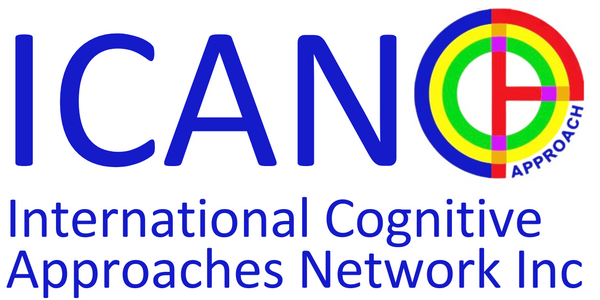
Using the Cognitive Orientation to daily Occupational Performance (CO-OP) Approach with Youth with Acute Mental and Behavioral Health Needs: Part 1 The Context
Share
Author Bios: Lindsay Davis (MOT, OTR/L) works with patients experiencing acute psychiatric crises in inpatient pediatric behavioral health settings.
Megan McKim (MOT, OTR/L) works as a clinical manager in pediatric behavioral health, supporting quality and process improvement, program development, and clinical operations.

Lindsay and Megan both work at Nationwide Children’s Hospital in Columbus, OH.
Background:
In the US, the number of youth who experience a mental or behavioral health disorder is climbing. Currently, it’s estimated that 1 in 5 young people live with at least one diagnosable mental health condition with half of all chronic mental illness beginning by the age of 14 (On Our Sleeves, 2019). Pediatric mental health is an often overlooked and underfunded component of pediatric health with only about half of children that need treatment actually receiving it (On Our Sleeves, 2019). Lack of adequate services and timely intervention have contributed to the increasing rates of youth suicide in the US with suicide now representing the second leading cause of death for young people aged 15-25 years (On Our Sleeves, 2019).
The impact of mental illness on a child's life and developmental trajectory can be significant with common impairments including decreases in daily living skills, academic difficulties, poor social and self-regulation skills, and suicidal or self-harm behaviors (Center on the Developing Child, 2017; Katz & Toglia, 2018). AOTA has identified mental health as a key practice area for the 21st century and asserts occupational therapy's distinct value in mental health promotion, prevention, and intervention (AOTA, 2016). Occupational therapy is uniquely poised to meet the needs of children experiencing mental and behavioral health challenges in ways that are both complementary to and distinctly different from other professionals.
Nationwide Children’s Hospital:
At Nationwide Children’s Hospital (NCH) in Columbus, OH, we are passionate about integrating physical health with behavioral health and aspire to serve as champions for the holistic wellbeing of children. For youth experiencing a psychiatric crisis, an inpatient hospital admission is often a necessary course of care in order to support crisis stabilization and safe reintegration into homes, schools, and communities. At NCH, we provide inpatient psychiatric care within The Big Lots Behavioral Health Pavilion (BHP). The BHP constitutes the largest free-standing behavioral health facility on a pediatric medical campus in the country and is focused on expanding patient and family access and breadth of services, conducting BH-specific research, fostering collaborations between community partners and agencies, and conducting education and training for BH professionals. Our OTs are an integral part of our inpatient psychiatric service lines, providing assessment, individual and group intervention, family education, and discharge planning service; services are geared towards supporting our patients in developing new skills and modifying their activities, environments, and routines to help them improve their performance, independence, and satisfaction in their daily activities and occupations.
While the importance and value of OT in this setting is evident, there are limitations in validated, evidence-based, and OT-centric approaches to care for these youth. After attending a multi-day workshop and consolidation day series on the applications of CO-OP with pediatric OT clients (Iverson & Sharpe, 2021), several members of our OT team theorized that there could be viable applications of the CO-OP Approach to our patients presenting in an acute psychiatric crisis. From here, we created a framework to trial the use of CO-OP with small groups of patients for which we inferred the model was an appropriate fit after carefully considering client factors.
Why CO-OP?
There are a wide variety of factors that made CO-OP an attractive approach to explore as it relates to our patient population.
- CO-OP is a validated approach for use in OT practice with youth with select diagnoses that we commonly see in patients admitted to our programs such ADHD, ASD, and DD.
- The top-down approach taken by CO-OP lends itself well to a service delivery model with the acute length of stay (LOS) common for our programs, which is ~10 days. In this narrow timeframe, it’s much more feasible and clinically appropriate to focus on addressing barriers to performance and modifying the task, environment, or routine to enhance performance vs. targeting true skill remediation.
- The dynamic performance analysis (DPA) provides a tangible, concrete way to track progress over time, even if the goal is somewhat challenging to measure. For example, while goals and associated interventions for physical dysfunction skills (i.e., ROM or strengthening) tend to be more linear in progression and more prescriptive, behavioral health goals, especially for a child actively in crisis, may be less so (i.e., a goal related to self-regulation or self-esteem). The DPA provides a simple way to measure therapist-perceived performance as well as child-perceived performance and self-efficacy quickly and in real time. Even though we are not able to observe some of the skills like we can for a rote motor task (i.e., you are not able to observe sleep hygiene like you can jumping rope), we made simple modifications to the structure of interviews to process performance and barriers that still allowed us to take a metacognitive approach to improve function.
- CO-OP can be applied and utilized in a group setting as long as each individual’s goals within the group are being addressed. This was appealing since group intervention is often a core component of best practice when providing care to youth experiencing a psychiatric crisis and receiving inpatient-level care.
- Many of the behavior support strategies utilized in psychiatric crisis care are complimentary to the inherent components of the CO-OP model. For example, identifying motivators, supporting behavioral activation (or actively identifying and engaging in behaviors that contribute to improved mood or wellbeing) are key components of both our programming and the CO-OP Approach.
- Cognitive strategies utilized in CO-OP are complimentary to validated treatment approaches for distress tolerance in children with BH challenges or disorders, such as imagery, distraction, mindfulness, and relaxation to support self-regulation and coping.
- The structure of CO-OP was able to be easily modified to accommodate the intensive, concentrated burst of intervention that we provide within an acute LOS ~10 days in total.
In our next blog we will discuss the good fit of the CO-OP Approach in the context as described above and present some case studies.
Citations:
- American Occupational Therapy Association. (2016). Occupational therapy’s distinct value: Mental health promotion, prevention, and intervention across the lifespan. Bethesda, MD: AOTA Press.
- Center on the Developing Child. (2017, February 14). Early childhood mental health. https://developingchild.harvard.edu/science/deep-dives/mental-health/.
- Iverson, E., & Sharpe, P. (2021). Cognitive orientation to daily occupational performance (co-op) conference. Nationwide Children’s Hospital Conference, Columbus, OH.
- Katz, N., & Toglia, J. (2018). In Cognition, occupation, and participation across the lifespan: Neuroscience, neurorehabilitation, and models of intervention in occupational therapy (pp. 9–27). essay, American Occupational Therapy Association.
- Nationwide Children’s Hospital On Our Sleeves. (2019). On our sleeves advocacy toolkit. https://www.nationwidechildrens.org/giving/on-our-sleeves/get-involved/advocate/toolkit
